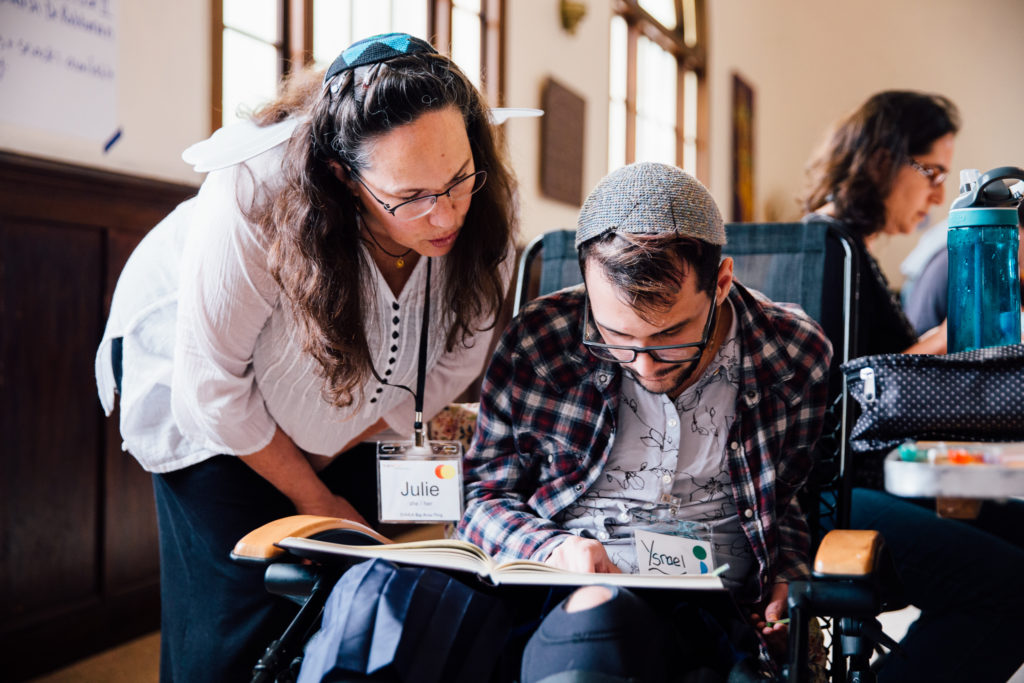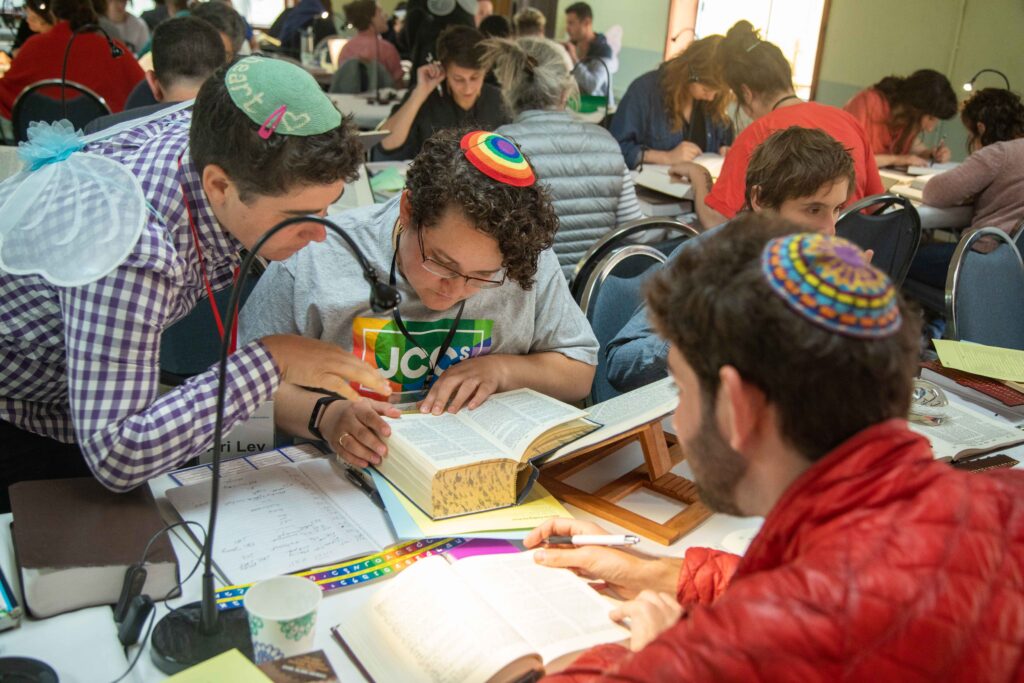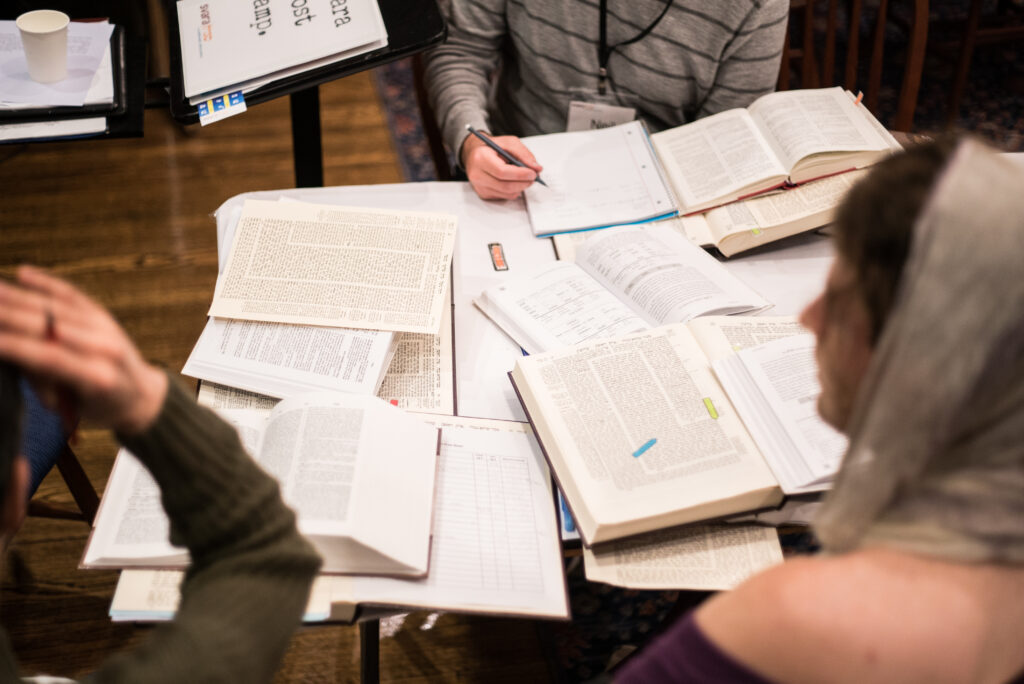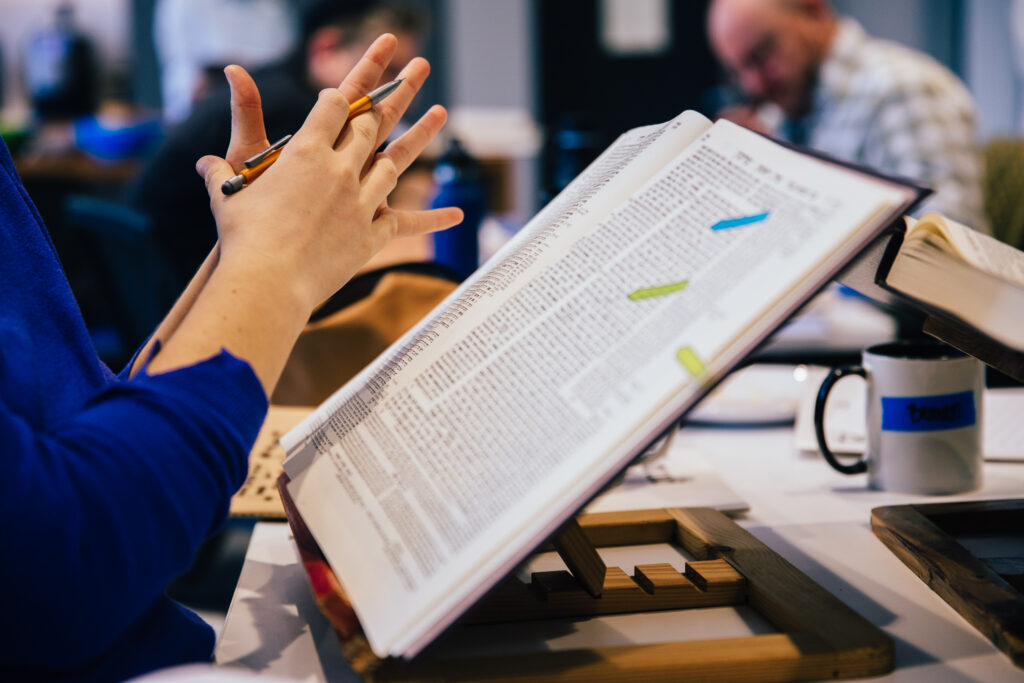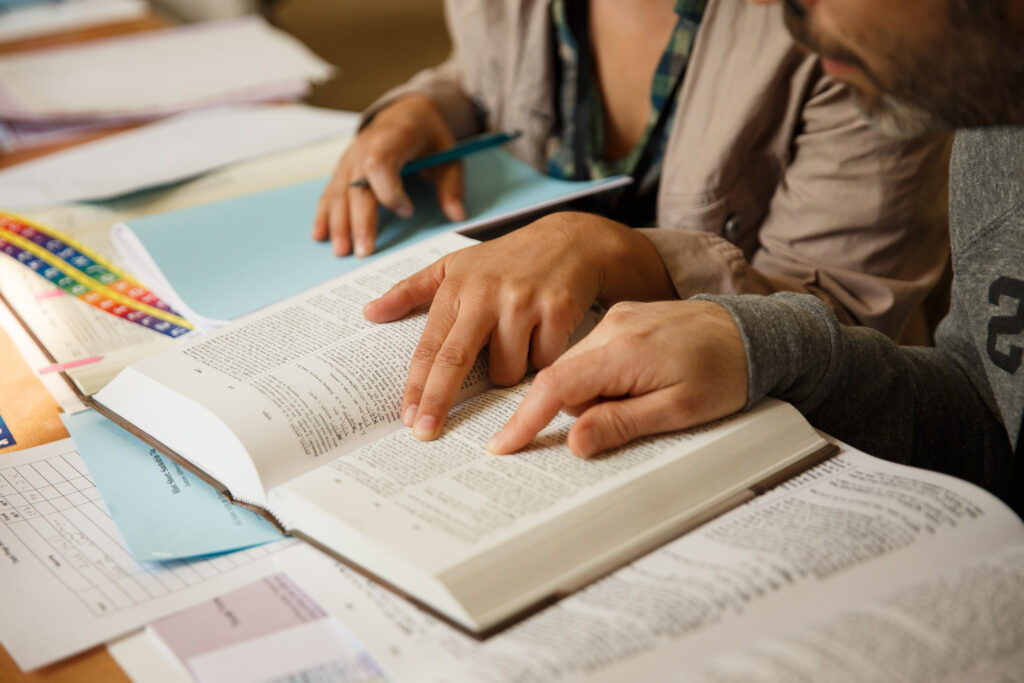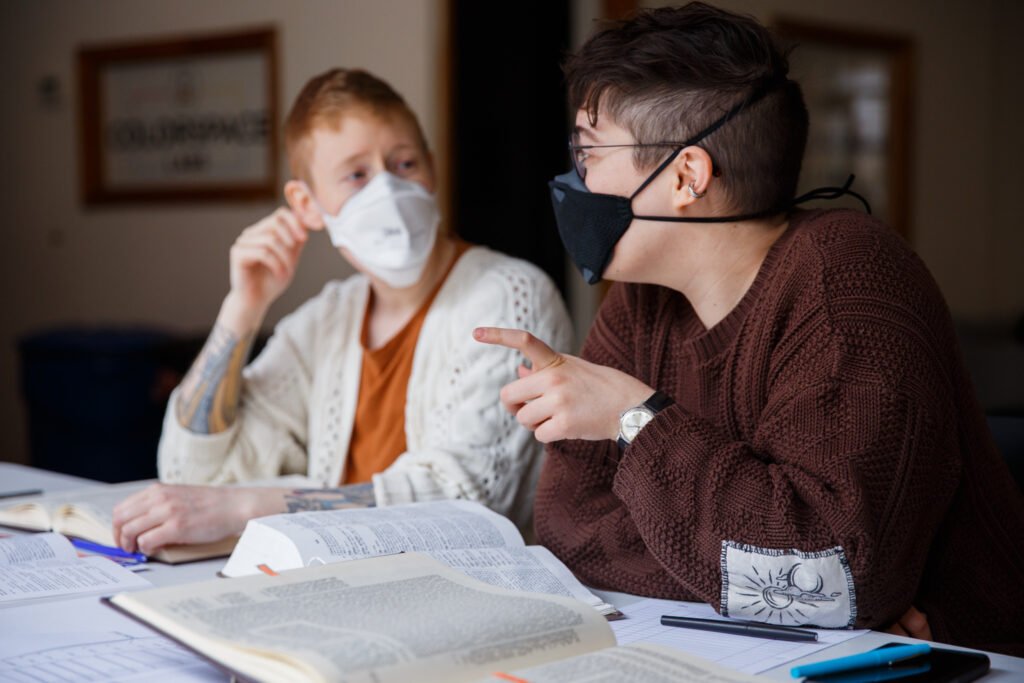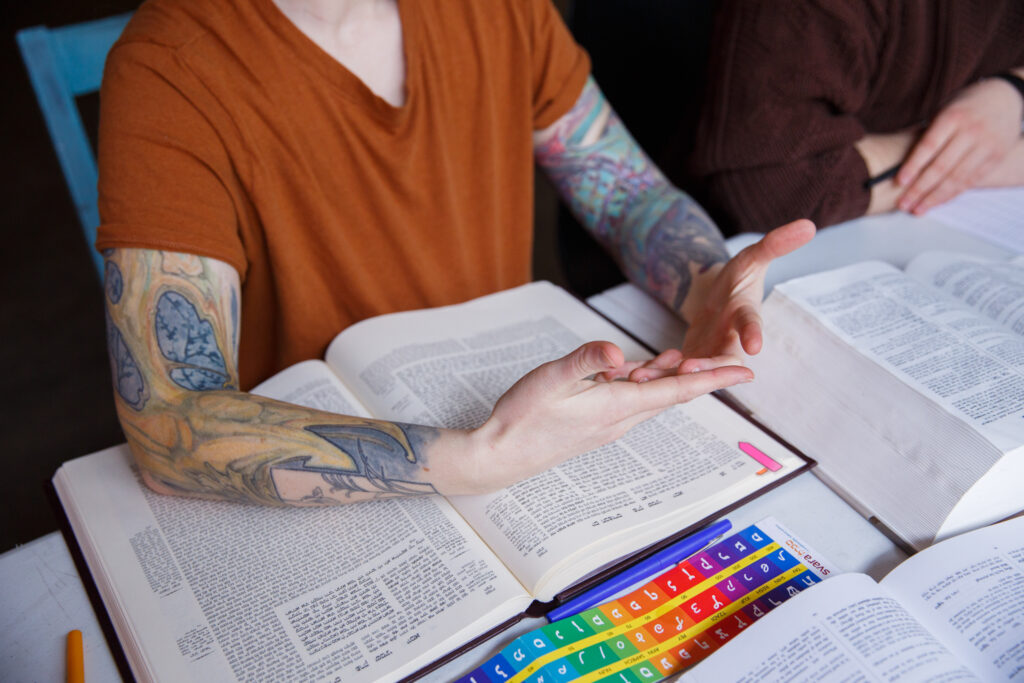Now that our holy and reflective month of Elul has begun, I have my sights set on Yom Kippur: the Sabbath of Sabbaths, the peak of holiness and transformation. At SVARA, in this month of preparation before entering the High Holy Days, we are focusing on “teshuva,” the Rabbis’ sacred invention, a process of return and repair. Our Rosh Yeshiva Rabbi Benay Lappe defines teshuva as “the practice of recognizing whom we’ve harmed and repairing that harm, addressing where we might have fallen short in becoming the people we want to be, and returning to right relationship with ourselves, with God, and with others.”
This past year, I read and completed the book of Mishnah Yoma, word by word. This is the volume of Talmud that is entirely focused on Yom Kippur. It is made up of eight chapters, and the eighth and final chapter gives us the blueprint of teshuva. The first seven chapters (read: most of the book!) are all about the logistics of temple worship, a practice we no longer do. These chapters focus on meticulous details about how the temple service works for Yom Kippur. They largely revolve around the Kohen Gadol, or the high priest, and his preparation to enter the inner part of the temple, the Holy of Holies. He does this to atone for everyone. When I say “meticulous details,” I really mean it. Yoma details the intricacies of special clothes, which change from white to gold and from gold to white five times. There are rounds of mikvah (ritual dunking in water) between each change, there’s a goat, another goat, a bull that’s sacrificed in very specific ways, some more dunking, and a lot of things to do with blood. This book has an unmistakable rhythm: it is a detailed instruction manual for a ritual that we don’t do in a place that doesn’t exist. Passages recounting the details of the Avodah service are read in some prayer communities during services on Yom Kippur, though many folks de-emphasize it, mumble through it, or skip it altogether.
This ritual is unrecognizable to us, but it also would have been unrecognizable to the people studying the Mishnah once it was codified, over 200 years after the Temple was destroyed. I wonder why the Rabbis kept this record – is it to offer an example of something we could do in the future? Is it a blueprint that we can riff off when we go Option 3? Are the Rabbis trying to demonstrate just how over-the-top it was, how unnecessary? While it’s impossible to know with certainty, I have a hunch that one reason they kept this record was to reveal what exactly they were responding to when they began to chart a new way of engaging with Yom Kippur. As someone deeply invested in going Option 3, I like to think the Rabbis were particularly interested in revealing the cracks in the foundation of the ritual.
When I read these chapters, I notice a lot of logistics. But when I get a little closer, I’m consumed with flickers of soap opera-worthy drama and flashes of fraught relationships – we have some HIGH DRAMA in our history, team. Right at the start, they describe a passage that I can’t stop thinking about. The scene: We’re in the midst of Kohen Gadol’s preparations to enter the Holy of Holies by himself to seek atonement. He is going to learn how to prepare the incense, one of the last steps before entering the Holy of Holies. The Kohen Gadol enters the Holy of Holies himself – in fact, no one enters the Holy of Holies with the exception of the Kohen Gadol, once a year. It’s a high drama moment, one that might cost him his life. Before the Beit Din (court) leaves the Kohen Gadol, they make him take an oath that he will perform the rituals correctly when he enters the Holy of Holies, and not do anything that departs from the ritual he has learned.
Mishnah Yoma 1:5
והשביעוהו ונפטרו והלכו להם. ואמרו לו, אישי כהן גדול, אנו שלוחי בית דין, ואתה שלוחנו ושליח בית דין, משביעין אנו עליך במי ששכן שמו בבית הזה, שלא תשנה דבר מכל מה שאמרנו לך. הוא פורש ובוכה, והן פורשין ובוכין
They made him take an oath, and they took their leave and went. And [when they would administer the oath] they said to him, “My master, Kohen Gadol, we are messengers of the Beit Din and you are our messenger and the messenger of the Beit Din. We make you take an oath by the one who made Name to dwell in this House [that’s G!d] that you do not change anything of what we said to you.” He would turn aside and weep and they would turn aside and weep.
Just as matter-of-factly as the Mishnah shares the instructions for sacrificing the bull, we learn that when the Bet Din asks the Kohen Gadol to swear that he won’t do any funny business, he “would weep.” Then, the people who made him swear “would weep.” So much weeping! The sentence is conjugated such that we can’t read this as something that happened just once. This is what happened every year; this emotionally-charged exchange which leads to this weepfest is literally embedded into our ritual patterns.
I find this to be the most striking line in the mishnah, and I’m still not exactly sure why. Perhaps it’s because it shows the imperfections of a holy practice that was all about doing things perfectly. Perhaps it’s because it feels like a peek behind the curtain of an opulent event that reveals pain, pressure, and vulnerability. Perhaps it’s because we see the humanity of the individuals at the center of this ritual. Perhaps it’s because we can see how trusting each other is really, really hard.
We could view this tragic moment in a few ways. We might view it as mourning on the systemic level. The weeping reflects a sadness about the state of our people, and what brokenness is embedded in our holy systems. This is how the Jerusalem Talmud understands what’s happening in the Mishnah. Another way of understanding it is to view it as a rift between individuals. The Kohen Gadol weeps because he is being suspected of sabotaging the most important ritual of the year, perhaps his holiest moment. And why would the elders weep? They would weep because they had to cast doubt on this high stakes moment. They have to confront that they would suspect the High Priest of sabotaging it all:
והם פורשין ובוכין דא״ר יהושע בן לוי כל החושד בכשרים לוקה בגופו
“And they would turn aside and weep”: as Rabbi Yehoshua ben Levi said: One who suspects the innocent, their body suffers.
With nothing other than his moral intuition, Rabbi Yehoshua ben Levi sees this pattern, sees the tears, and recognizes something about trust and doubt. He pairs doubt with affliction, and shines a light on the affliction of the perpetrator.
So what does all of this have to do with teshuva? The Rabbis created teshuva as a new technology for Yom Kippur: they put it in the last Mishnah of the last chapter of Yoma, and from there it grew into what Yom Kippur means to us today. It’s a time of self-reflection, returning, and relational repair. The Rabbis interpret this moment with Kohen Gadol as a complete and total breakdown of trust. They understand that the systems used to protect the ritual fail to repair harm, and instead continue causing pain. The answer is teshuva, a new way of seeking atonement during Yom Kippur. The Rabbis bring in teshuva to make sure that we aren’t just going through the motions and spiraling towards this poignantly portrayed weepfest. Instead, they put their efforts towards building trust before the big day
At SVARA we often talk about how the Rabbis are going Option 3. They’re taking the goodies from their tradition and upgrading the pieces that need to be reimagined. I would say that this is a definite upgrade. May Elul be full of self-reflection, trust building, and the courage to imagine these upgrades as our best shot at liberation.

